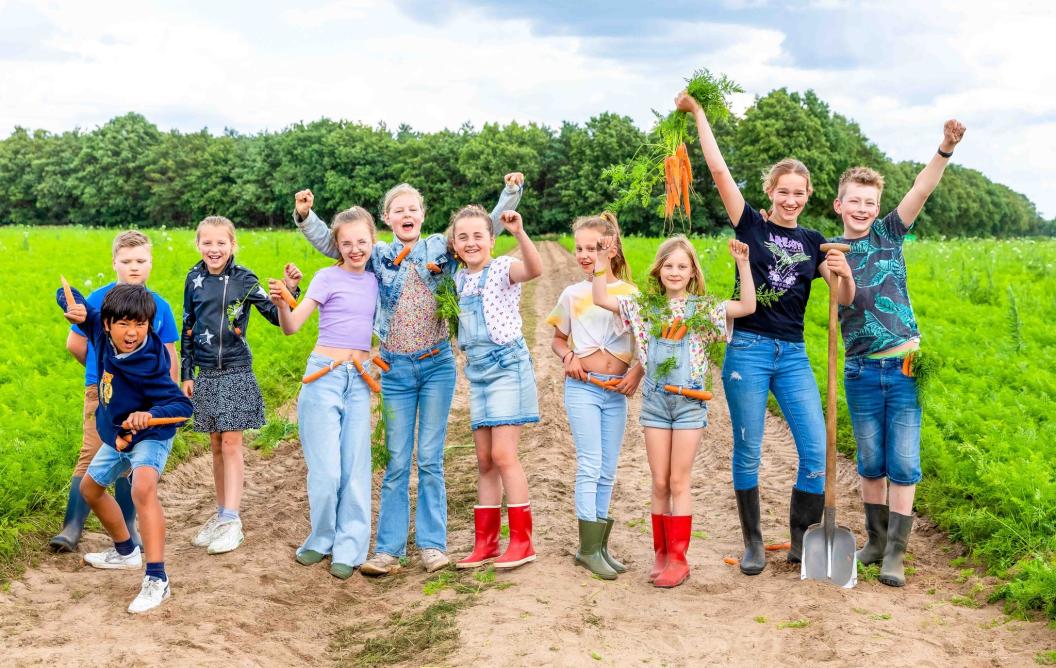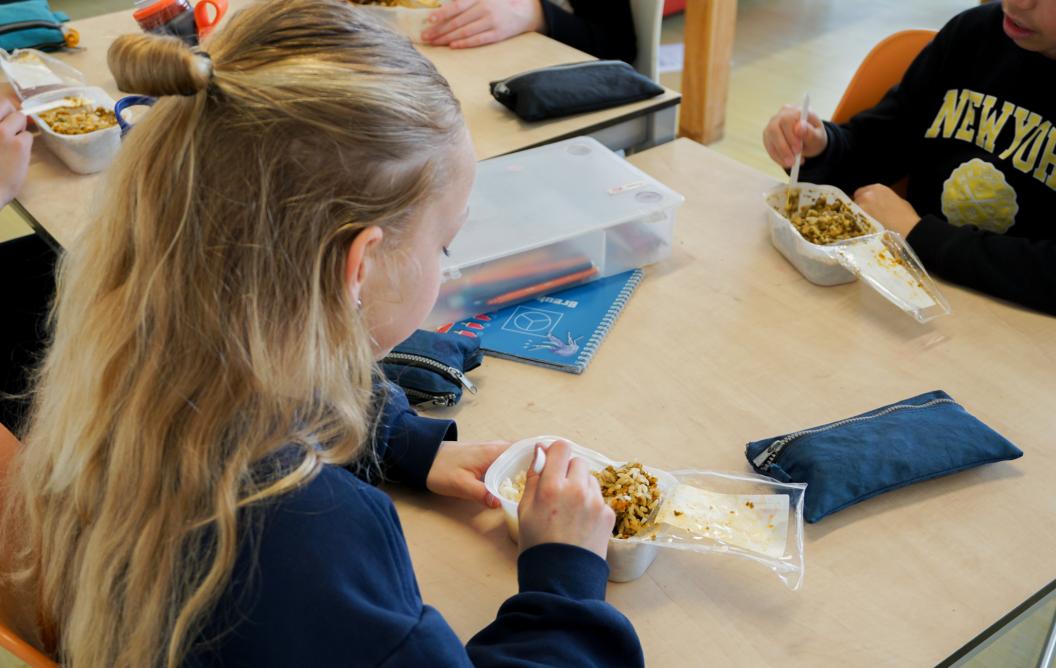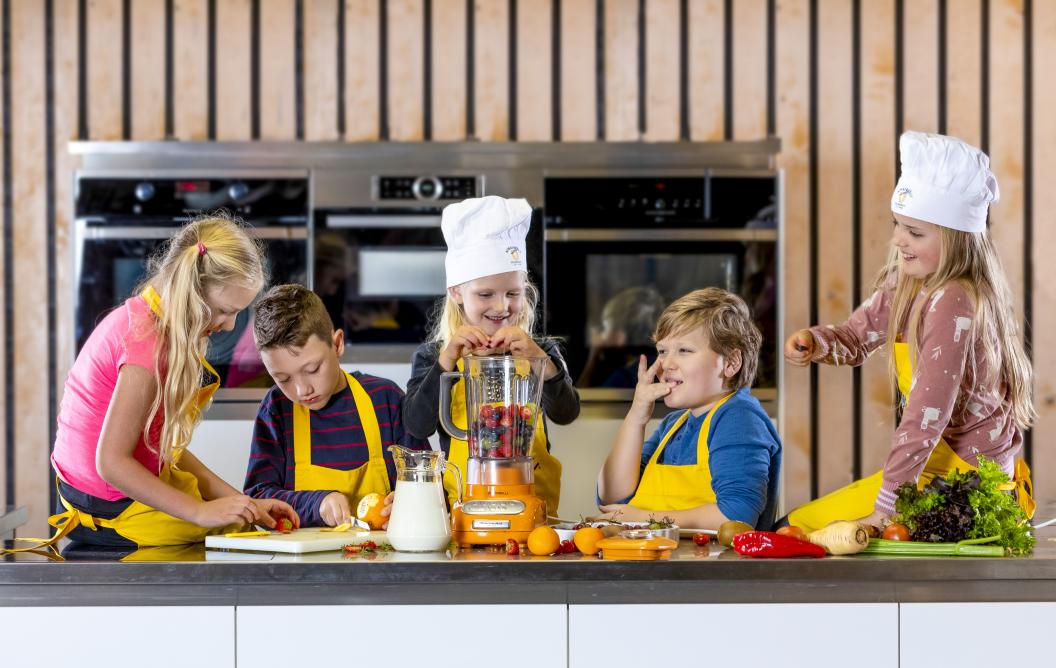Magical Moons transform children into healthier citizens
Healthy school lunches in primary schools ensure that children consume more vegetables, both at school and at home. This is supported by research led by Ilse van Lier. Deloitte has utilised her findings to demonstrate that school lunches lead to healthier adults, resulting in reduced healthcare usage and lower rates of absence. Now, that is impactful research! Read on, allow yourself to be transformed, and try a healthy lunch yourself.
In primary schools, less than half of children aged 4 to 12 consume sufficient vegetables daily. By the time they enter secondary school, only a quarter eat an adequate amount, despite the fact that vegetables are essential for good health. Ilse van Lier is investigating how to encourage primary school children to eat more vegetables. She works for the chair in Youth, Nutrition, and Health at University College Venlo.
After completing her Master’s in Health Food and Innovation Management in Venlo, she began researching healthy eating for children at the Brightlands Greenport Campus. This research received an unexpected boost with the introduction of school lunches in Dutch primary schools. “These started because youngsters are eating unhealthy lunch. Sometimes they leave home without food, or only bring yesterday's fries.” She conducts her research in collaboration with Kokkerelli, an organisation focused on education, research, and innovation in child nutrition. “Kokkerelli involves children in their work, for instance, by having them create recipes for school lunches. It serves as the field lab for my research.”
Children take part
Her work heavily relies on the school lunches created by and tested with children. The producer named them Magical Moons, Coco Loco or Supple Shells. “We offer lunches that meet the guidelines for healthy eating. They are served warm, as there are simply more vegetables that can be enjoyed cooked than raw.”
During a 3-week pilot study, 455 children from Year 4 to Year 8 at three primary schools had a warm lunch at school three times a week. The results are encouraging. Vegetable consumption rose from 8 grams to between 120 and 180 grams per lunch (depending on age). Children tried vegetables at school that they had never tasted at home and reported being more willing to eat vegetables at home as well. Teachers and parents also responded positively overall. “The children eat a lot of vegetables at school, which leads to less stress about vegetables at dinner time. After all, they have already consumed a significant portion of their daily vegetable intake.”
Youngsters are eating unhealthy lunch. Sometimes they leave home without food, or only bring yesterday's fries.
Ilse van LierMore time
A follow-up study with children in the same age group has revealed that the implementation is more challenging than hoped. In this study, the students were provided with warm, vegetable-rich lunches for 12 weeks; it became apparent that sustaining this was difficult. “We observed that the children and their teachers began with the same enthusiasm, but towards the end, increasingly fewer children were finishing their lunches. A common complaint was lack of variety –‘not pasta again!’ A loss in teacher motivation further contributed to the problem. Once the children notice this, their own motivation drops as well.”
Another contributing factor is the short duration of the lunch break, which lasts only 15 minutes, while there are other activities such as watching a video together.
“Success is greater in schools that have longer breaks, such as in Sweden and Finland, where the break lasts 1 to 1.5 hours and everyone receives a healthy school lunch every day. The current phase of our research is ongoing, including at a school with a one-hour break. Here, the school lunches are thriving. We are now focussing our research on optimising the basic requirements for a school lunch, such as providing a more varied lunch. We are seeking the successful formula for implementation.”
Impact
It was a surprise when Deloitte approached the Venlo researchers for collaboration in drafting a report on the societal benefits of school lunches. Based on Ilse's and other research, Deloitte has reached a remarkable conclusion. For every billion euro the government invests in school lunches, there is a subsequent saving of 4.5 billion euro, as these children, once adults, require less healthcare and have lower absence rates. “By consistently offering children vegetables, they come to regard eating them as normal, and we know that individuals who consume plenty of vegetables are less likely to be overweight and, consequently, less prone to illnesses associated with obesity.”
text: Patrick Marx
Photographs: Kokerelli
Recipe for a Healthy Lunch
Source: www.kokkerelli.nl
Omelette Wrap with Lots of Vegetables serves 4
Ingredients
- 8 medium eggs
- 250 g ricotta
- 2 tablespoons mild olive oil
- 40 g lamb's lettuce
- 3 Tasty Tom tomatoes
- 75 g julienned carrots
Instructions
- Whisk the eggs together with two-fifths of the ricotta, and season with salt and pepper if desired.
- Divide half of the oil between two frying pans. Pour a quarter of the egg mixture into each pan and cook over medium heat for 2 minutes, until the egg sets.
- Flip the omelette and cook for one more minute. Remove the omelettes from the pans and place them on a plate. Repeat to make two more omelettes.
- Coarsely chop the lamb's lettuce and dice the tomatoes into small pieces.
- Spread the remaining ricotta on the omelettes, and top them with lamb's lettuce, tomatoes, and julienned carrots. You can season the omelettes with pepper and salt to taste if desired.
- Roll the omelettes tightly and cut them in half.
- Enjoy, your wraps are ready!


